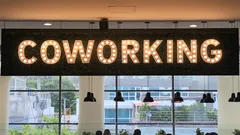275
7
4 minutes
Suggested Articles

First-generation Ivy Leaguers triumph over unique college challenges
Discover key insights, life hacks, and data-driven tips for first-generation college students thriving in prestigious U.S. universities. Find practical strategies, unique challenges, and fresh perspectives essential for student success.

Memorable employees spark lasting change with bold moves and real empathy
Hiring

Factory workers ignite change as unity challenges company culture and sparks consequences
Hiring

Community leaders ignite change and strengthen immigrant rights across America
Volunteer

How the WNBA Transformed Women’s Basketball and Inspired a Movement
Civic Education

Future students weigh Harvard's evolving prestige against modern ambition
Hiring

Women in STEM: Shaping an Inclusive and Exciting Future for All
News & Updates

Hotel managers boost staff morale by prioritizing comfort over strict dress codes
Hiring

Leaked HR calls fuel quiet quitting as workplace trust collapses overnight
Hiring

Protester Disrupts Apple WWDC as Tensions Rise at Tech Conferences
News & Updates

Purpose-driven professionals trade bigger paychecks for lasting fulfillment
Hiring

First-generation Ivy Leaguers triumph over unique college challenges
Hiring

Americans brace for possible Social Security cuts that reshape retirement
News & Updates

Why this Florida data leak changes how we think about privacy
News & Updates

Build your own AI chatbot and unlock hands-on tech superpowers
Resources & Tools

How to outsmart hidden medical expenses in your golden years
Civic Education

California workers secure jobs this summer with new 2025 laws
Hiring
 Love Women Vibes
Love Women Vibes

Comments